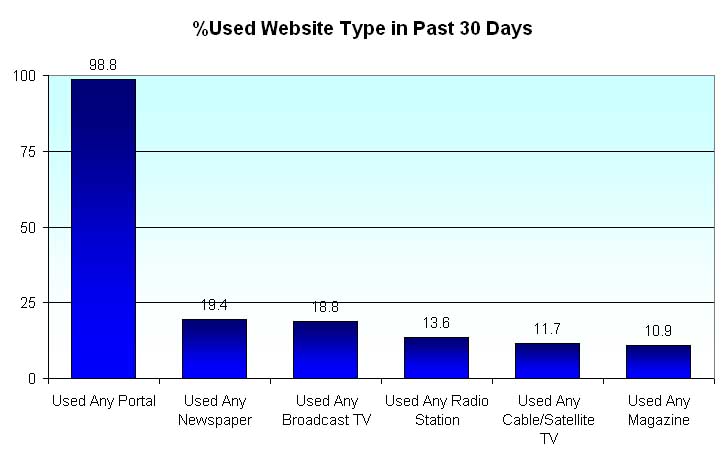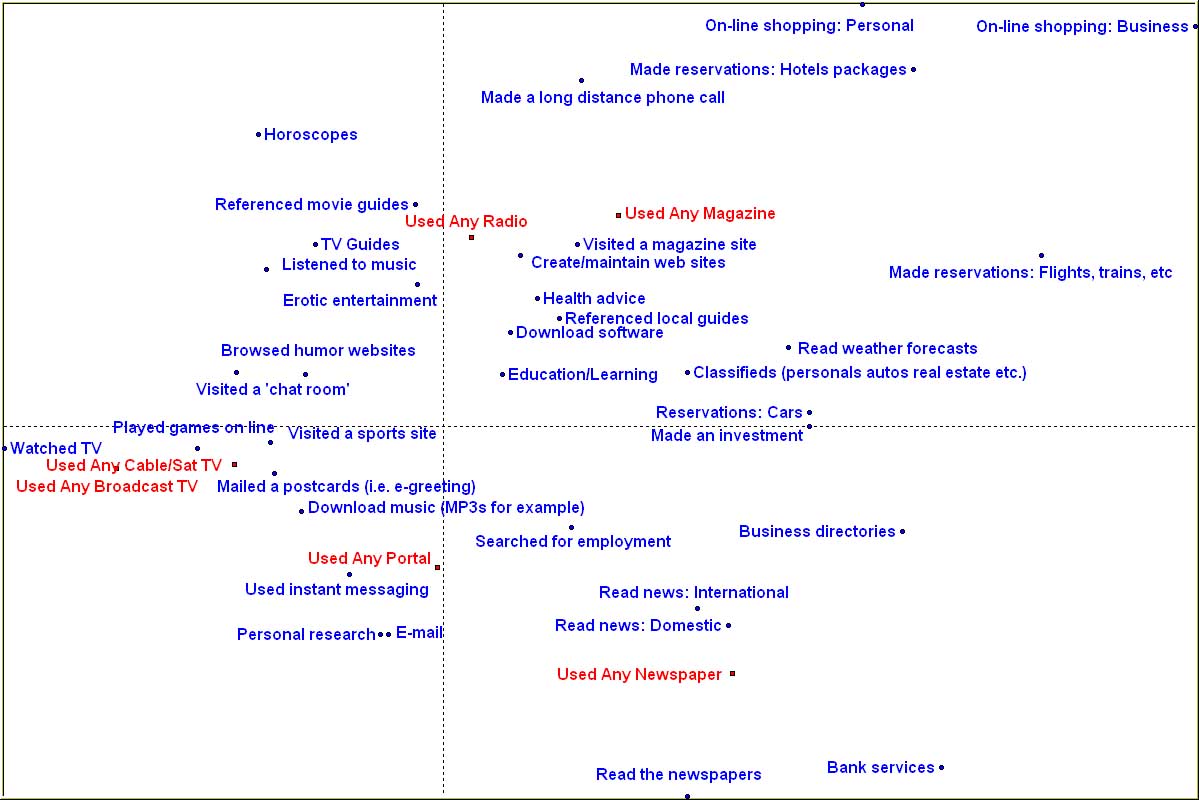
(Source: 2004 TGI Mexico Wave 1)
The Portals vs. Traditional Media On The Internet in Mexico
It would have been impossible to build up all the contents for the World Wide Web from scratch in a few years. Rather, much of what appears now on the Internet has been re-purposed from elsewhere. Most visible are the websites from the traditional media, namely, television, radio, newspapers and magazines. Not all traditional media can be transplanted onto the web; there may be degradation as well as enhancement of the contents in the process. Still, traditional media companies are attracted to the world wide web for a variety of reasons, and the barriers to entry are fairly low.In two previous surveys, Traditional Latin American Media on the Internet and Traditional Latin American Media on the Internet: Revisited, we looked at the presence of traditional Latin American media on the World Wide Web as covered by the directories associated with this website. In the traditional environment, these media compete with the known players in their field. On the World Wide Web, the website find themselves to be competing against non-traditional players.
On the World Wide Web, a portal is defined as a site featuring a suite of commonly used services, serving as a starting point and frequent gateway to the Web (Web portal) or a niche topic (vertical portal). Web portal services often include a search engine or directory, news, email, stock quotes, maps, forums, chat, shopping, and options for customization. These are only some of the most frequently offered services; large portals often include dozens or hundreds of bundled services.
Our objective in this article is to look at the competitive positions of the traditional media with respect to the portals. We will refer to survey data obtained from Wave 1 of the 2004 TGI Mexico Study. This is a survey of 4,181 persons between the ages of 12 to 64 years old itnerviewed at the beginning of year 2004. Of these respondents, 25% have used the Internet within the past 30 days.
Among the Internet users, we asked about the websites that they have visited. This cannot be an open-ended question asking for the respondent to recall their experience over the past 30 days, because there are far too many webistes to retrieve. Instead, what we have done is to show each respondents a list of Mexican websites in respective media categories and ask them to recall:
This list-based approach necessarily means that the coverage of each category is based primarily upon the presented list. It may be that the respondents read foreign newspaper websites or listen to foreign radio channels, and we attempt to cover as much as possible by letting them to check "Other" if they can recall.
In the next chart, we show the coverage of the various website types. The portals are virtually ubiquitous in the lives of Internet users. By comparison, none of the other traditional media types have more than 20%.

(Source: 2004 TGI Mexico Wave 1)
Actually, the true picture is not as clear-cut as it is made out to be. Given the known breadth coverage of these portals, some traditional media are in fact bundled within the portals. For example, if you are looking for Televisa's television programs on Canal de las Estrellas, they can be found at the portal esmas.com. Such a user may not have thought that they were accessing Canal de las Estrellas. However, there is no denying that the portals serve the same role in virtual life as shopping malls in real-life in serving the many needs of the consumers at one concentrated site.
Although the traditional media users on the World Wide Web ranges between 10% and 20%, they do not have to be the same set of people. In the following, we show a correspondence map between using website type usage and Internet activity within the past 30 days.
First of all, this correspondence map does show that the website types correlate well with the relevant activities: those who visited newspaper websites have red the news, etc. However, these website types are sufficiently dispersed in the map that they clear serve different consumer needs.

(Source: 2004 TGI Mexico Wave 1)
(posted by Roland Soong, 9/5/2004)
(Return to Zona Latina's Home Page)